Journal of Daylighting
Journal of Daylighting is a peer-reviewed international journal devoted to investigations of daylighting in buildings. It is the leading journal that publishes original research on all aspects of solar energy, buildings, and lighting. Areas of special interest for this journal include, but are not limited to, the following:
- Solar energy
- Photovoltaic cells and systems
- Building-integrated photovoltaics
- Solar concentrator technology
- Solar thermal
- Solar energy applications
- Buildings
- Sustainable buildings
- Energy efficient buildings
- Building energy modeling
- Building physics
- Building envelopes
- Indoor environment quality
- Lighting
- Daylighting
- Artificial lighting
- Lighting simulation
- Lighting designs
- Luminaires
- Lighting metrology and light quality
- Lighting control
Abstracting & Indexing
Scopus (Elsevier)
EBSCO
Directory of Open Access Journals (DOAJ)
Architectural Periodicals Avery Index
CrossRef
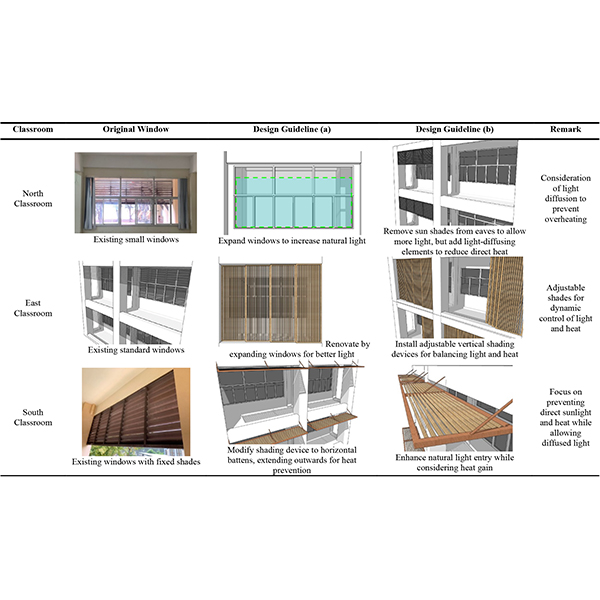
RESEARCH ARTICLE
Improving Natural and Artificial Lighting in Coastal Architecture Classrooms: Insights
This research examines the natural and artificial lighting performance comparison in an architecture classroom at a university in southern Thailand and gives principles for enhancing lighting design.
Journal of Daylighting 11 (2024) 23-38

RESEARCH ARTICLE
Electrochromic Glazing and Evaluation of Visual and Non-Visual Effects
The employment of electrochromic glazing can be a solution to balance circadian lighting and avoid glare. This can be achieved by controlling daylight entering the room and may be useful within the context of highly glazed facades in buildings in hot climates.
Journal of Daylighting 11 (2024) 1-22
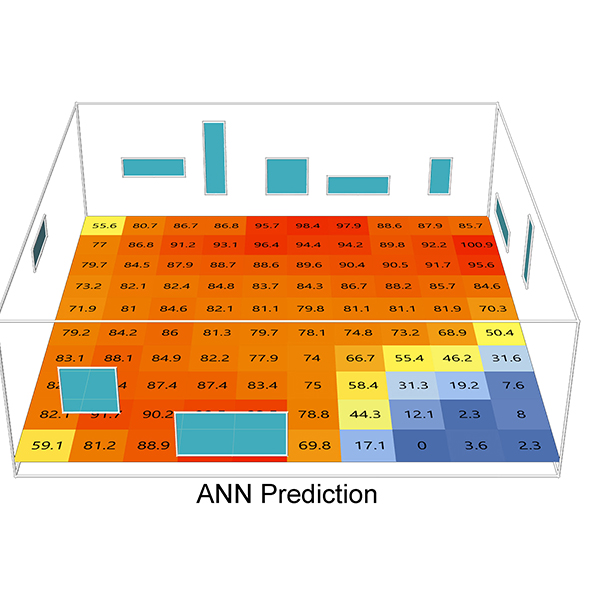
RESEARCH ARTICLE
Unfolding 3D Space into Binary Images for Daylight Simulation via
Daylighting plays a crucial role in building science, impacting both occupants’ well-being and energy consumption in buildings. Balancing the size of openings with energy efficiency has long been a challenge. .
Journal of Daylighting 10 (2023) 204-2013
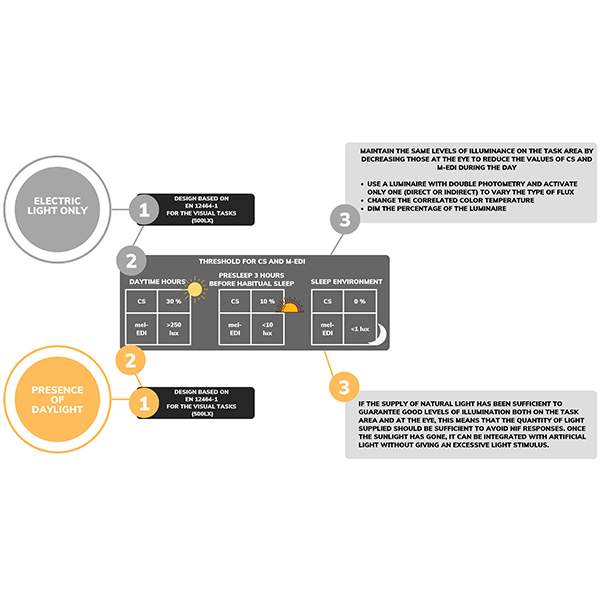
RESEARCH ARTICLE
Integrative Lighting Design: How to Optimize Visual and Non-visual
The objective of this paper is to outline fundamental principles for the electric lighting design of workplace environments such as offices. The study considers both the suggested guidelines and values for non-visual light design and the specifications for visual tasks dictated by the EN 12464-1:2021.
Journal of Daylighting 10 (2023) 192-203
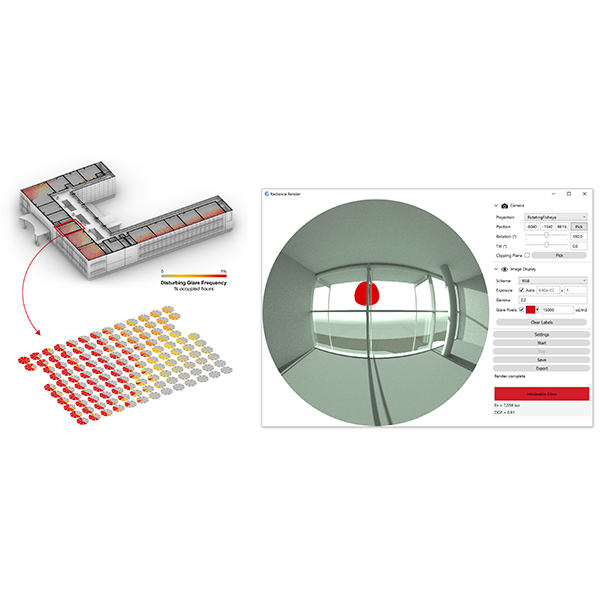
RESEARCH ARTICLE
The Effect of Parametric Patterned Façade Variations on Daylight
Parametric design influences on building envelope design are exponentially increasing in the current era due to the dominance of computational design on architectural outcomes.
Journal of Daylighting 10 (2023) 173-191
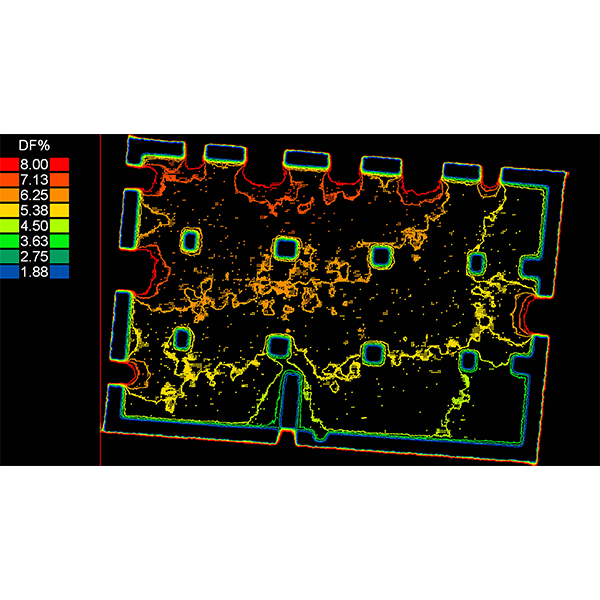
RESEARCH ARTICLE
Analysing the Daylighting Performance of the Main Prayer-hall in
This paper studies the daylighting quality of the indoor prayer-hall in The Great Upper Mosque of Hama city in Syria, highlighting this distinctive historical converted building that has been functioning as a mosque since the entry of Islam in the 6th century AD.
Journal of Daylighting 10 (2023) 153-172
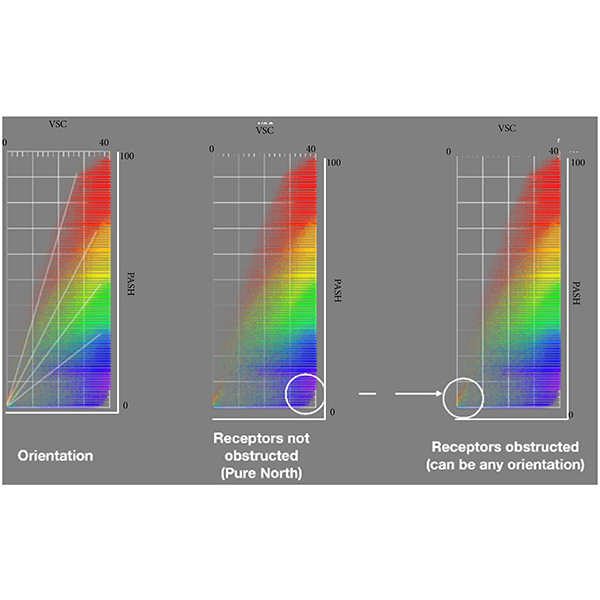
RESEARCH ARTICLE
Sunlight-Daylight Signature: a Novel Concept to Assess Sunlight and
Daylighting and solar availability at urban scale has come to play a crucial role in the perception of discomfort conditions for people, both in outdoor and indoor spaces, and on the energy consumption of buildings.
Journal of Daylighting 10 (2023) 136-152
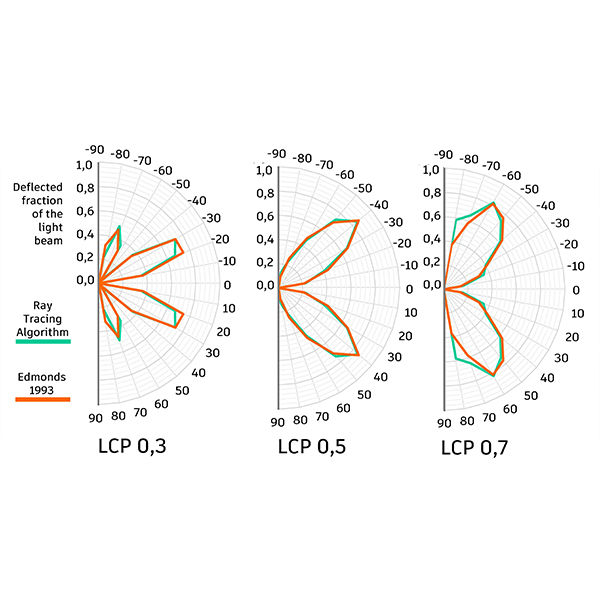
RESEARCH ARTICLE
Ray Tracing Algorithm to Simulate Laser-Cut Panel Light-Redirecting
Daylighting simulation software is an important tool to improve the quality of building design and to improve the quality of the built environment. For its application to correspond to reality, its algorithm needs to reflect real behaviour in the best possible way.
Journal of Daylighting 10 (2023) 87-98
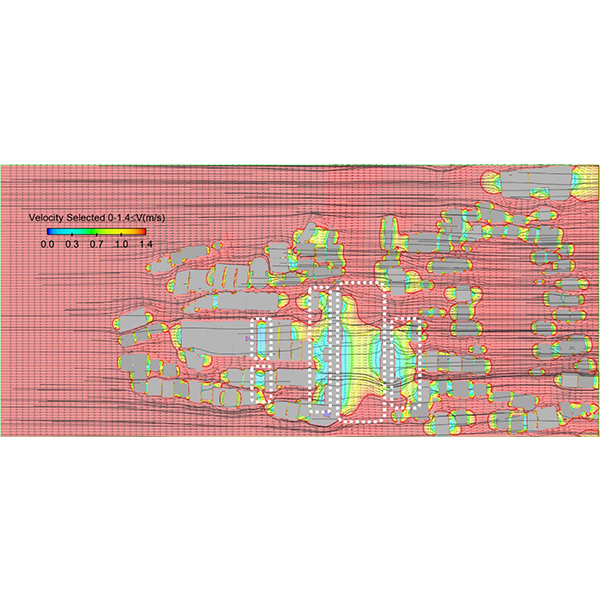
RESEARCH ARTICLE
The Effects of Orientation and Width of Space Between Buildings
Excessive heat in the high-rise urban fabric has contributed to pedestrian and occupants' discomfort. Establishing wind circulation in space with an environmentally compatible and optimal configuration is necessary to improve comfort in this region.
Journal of Daylighting 10 (2023) 99-116
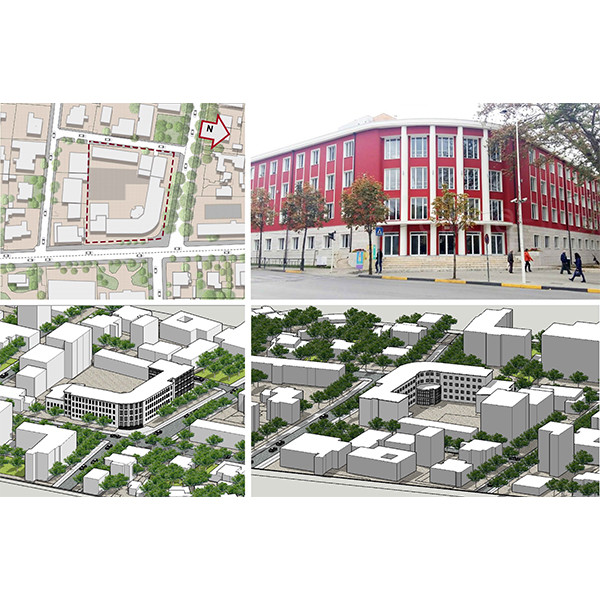
RESEARCH ARTICLE
Evaluation of the Visual Comfort and Daylight Performance of the
The daylight in classrooms is a crucial aspect that affects the quality of the learning environment and the overall performance of the students. Visual arts, such as painting, sculpture, carving, textile design and photography, require specific lighting conditions, which are different from the regular classroom standards.
Journal of Daylighting 10 (2023) 117-135
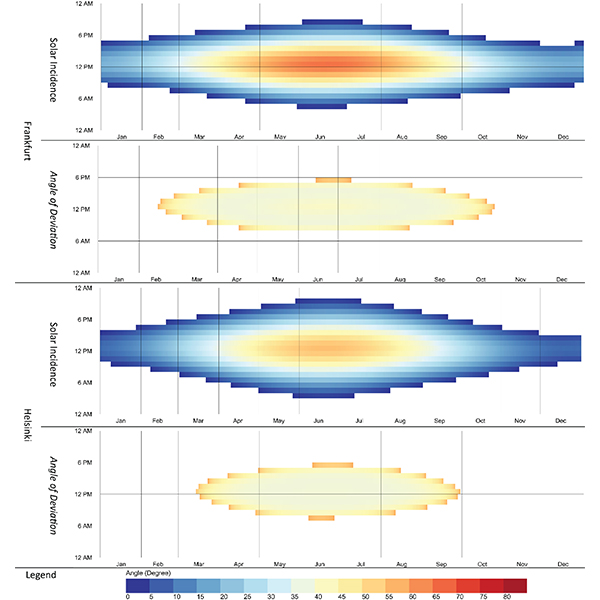
RESEARCH ARTICLE
Solar Angle Model for Daylight Redirection in Prismatic Panel
An advanced complex fenestration system can utilize uniform daylight. Nonetheless, an inefficient design would increase solar heat gain and indoor temperatures, besides uneven light distribution that would cause the "cave effect.
Journal of Daylighting 9 (2022) 257-265
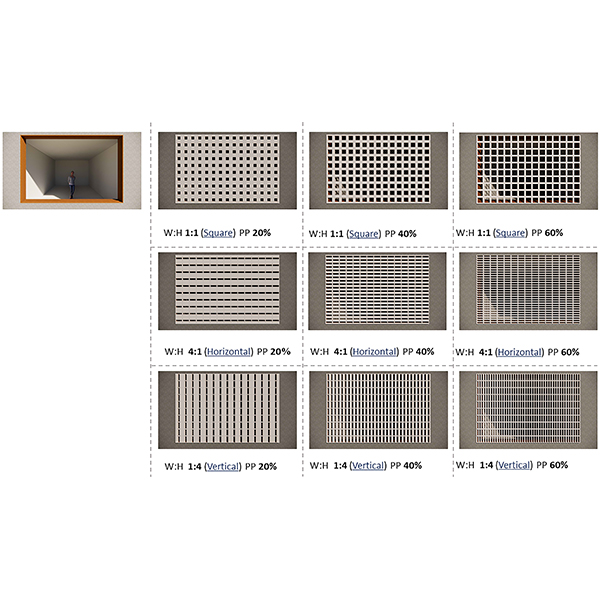
RESEARCH ARTICLE
The Significance of Aperture Proportion for the Lighting Behaviour and
Traditional solar screens in Iran (called Moshabak) are architectural devices used mainly in hot-arid regions, with two interrelated functions: controlling the penetration of sunlight and gaze from outside.
Journal of Daylighting 9 (2022) 242-256
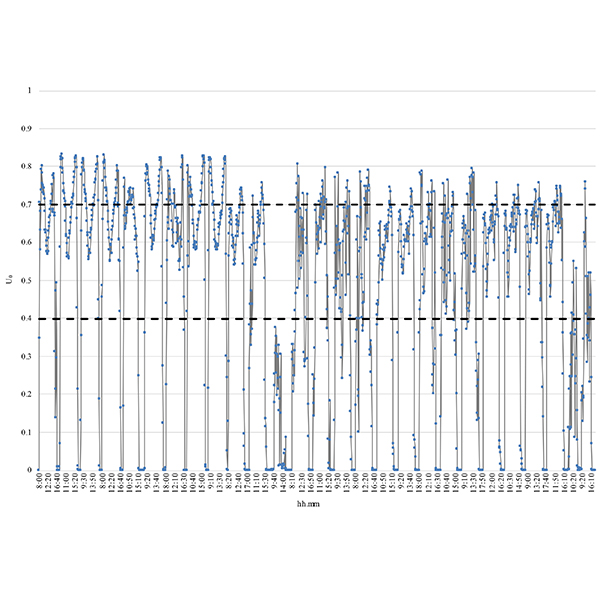
RESEARCH ARTICLE
Experimental Analysis on a 1:2 Scale Model of the
This paper is focused on the daylighting system named Modified Double Light Pipe (MDLP) designed by the authors as an evolution of the Double Light Pipe to eliminate the drawbacks due to its encumbrance and the high luminance of its upper portion.
Journal of Daylighting 9 (2022) 228-241
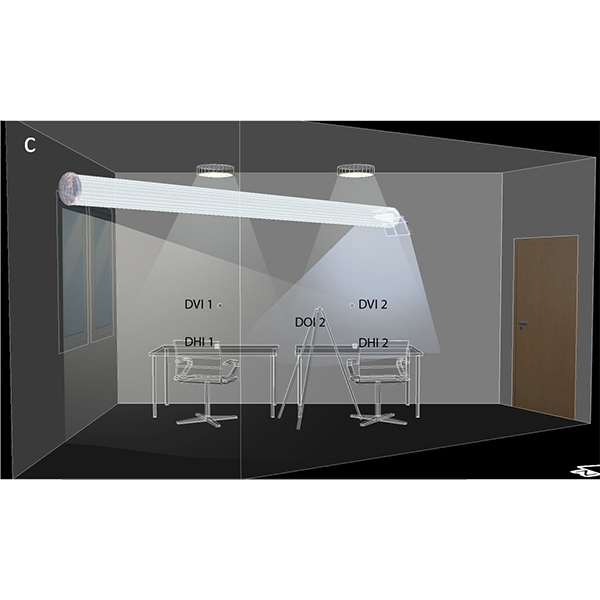
RESEARCH ARTICLE
Illumination and Lighting Energy Use in an Office Room with
This paper describes a field study of the illumination and lighting energy use in a full-scale test office in a building located in southern Norway. Natural light is provided to the office via southwest-oriented windows and a horizontal light pipe (HLP) with a daylight entrance facing the south.
Journal of Daylighting 9 (2022) 209-227
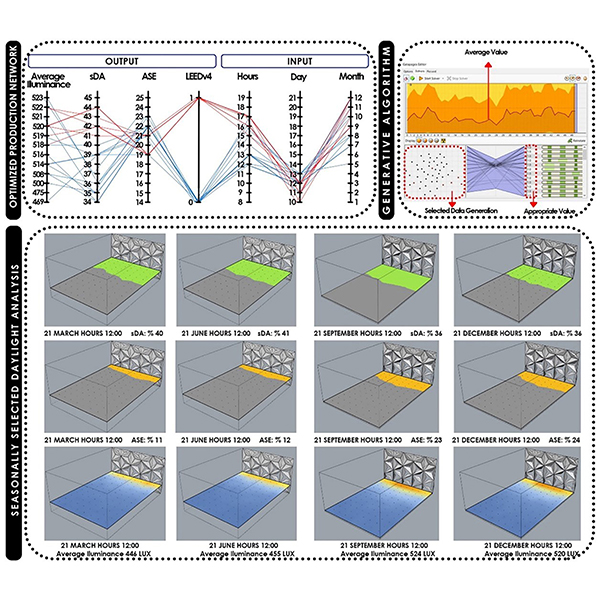
RESEARCH ARTICLE
Evaluation of Daylight and Glare Quality of Office Spaces with
There has been an increasing awareness in recent years about the evaluation of daylight and glare quality in buildings. In the study, an office space with a flat and a dynamic shading system facade (triangular cell facade) is discussed in the province of Mardin, which is in a hot and arid climate zone.
Journal of Daylighting 9 (2022) 197-208
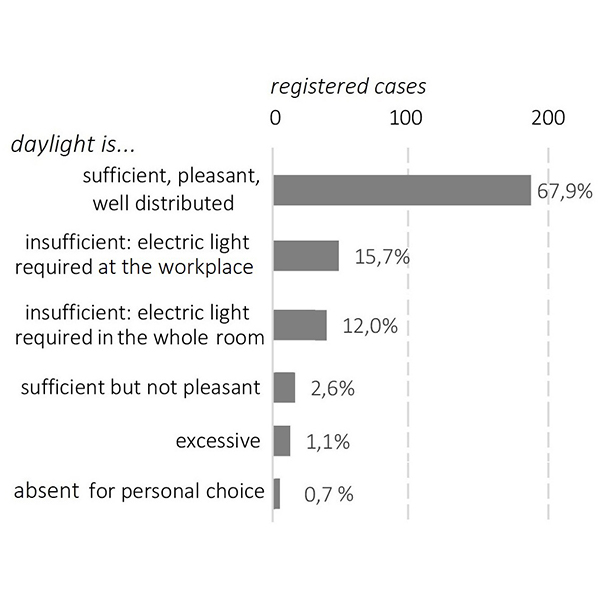
RESEARCH ARTICLE
Lighting Quality Self-assessment in Italian Home Offices
The spread of information technology and the improvement of telecommunicating systems have changed the way to conceive work. People performing typical office activities provided with a laptop and an internet connection can work in whatever place: a coffee house, a waiting room of a train station, an airport, or their own home.
Journal of Daylighting 9 (2022) 177-196
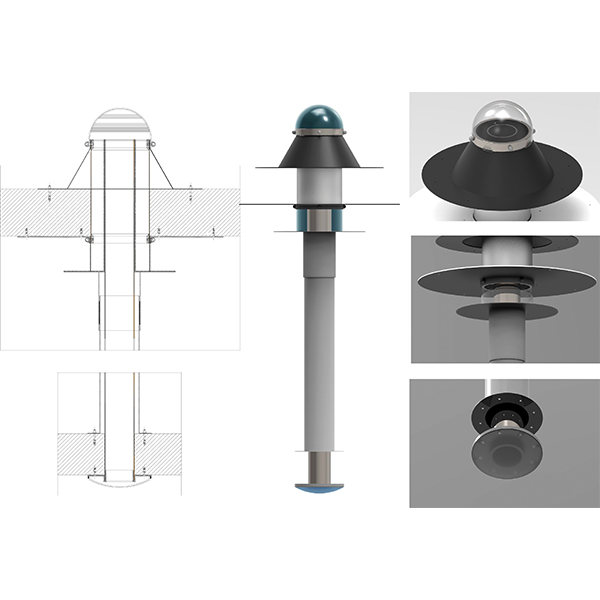
RESEARCH ARTICLE
Daylight Performance of the Modified Double Light Pipe (MDLP) Through
This paper focuses on the Modified Double Light Pipe (MDLP), an innovative daylighting system set up by the authors in the Laboratory of Technical Physics of the University “G. .
Journal of Daylighting 9 (2022) 164-176
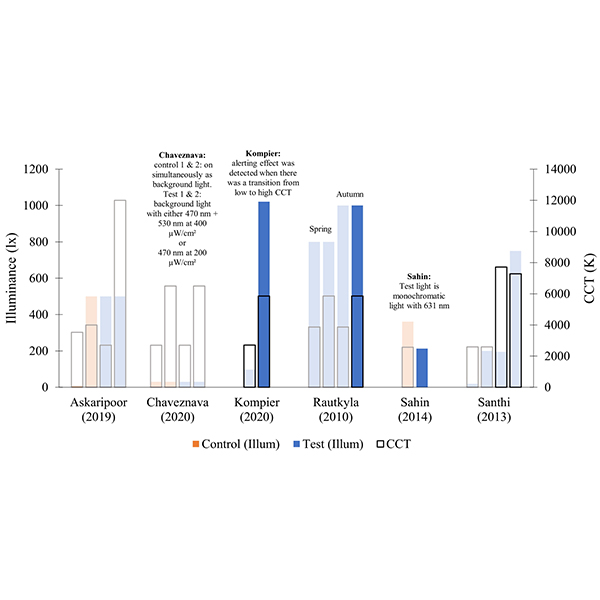
REVIEW ARTICLE
Alerting Effect of Light: A Review of Daytime Studies
Light affects humans beyond only image formation. Several studies have reported that light can increase daytime alertness and can therefore be positively utilized to counter daytime fatigue and increase productivity in workspaces.
Journal of Daylighting 9 (2022) 150-163
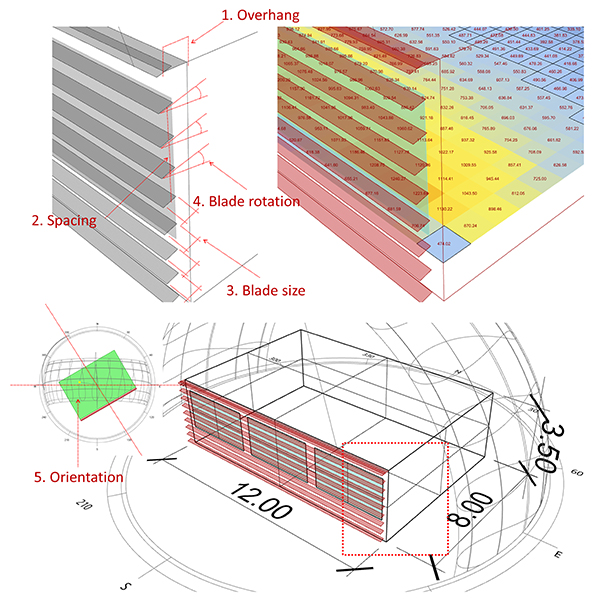
RESEARCH ARTICLE
The optimization of louvers shading devices and room orientation under
This paper presents parametric and multi-objective optimization (MOO) approach in optimizing daylight and energy consumption by incorporating louvres shading devices depicting three different sky conditions: Birmingham, UK, Jakarta, Indonesia, and Sydney, Australia.
Journal of Daylighting 9 (2022) 137-149
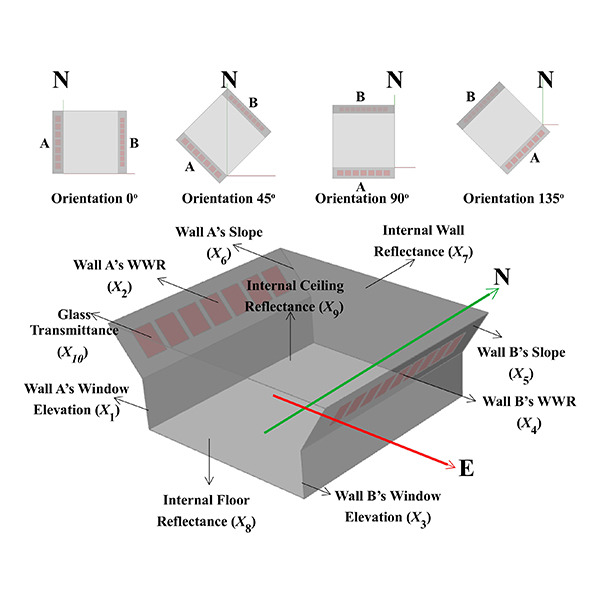
RESEARCH ARTICLE
Optimization of Daylighting Design Using Self-Shading Mechanism in Tropical
Despite its potential, daylighting strategies in school classrooms in the tropical climate regions is little explored in the literature. The use of two-sided or bilateral daylight opening, as well as the self-shading mechanism using sloped walls, are currently seen as potential strategies to achieve good daylighting in tropical buildings.
Journal of Daylighting 9 (2022) 117-136
Editorial Board

Prof. Lambros T. Doulos
Hellenic Open University, Greece

Prof. Antonio Manuel Peña García
University of Granada, Spain

Prof. Nabil Elminshawy
Port Said University, Egypt

Dr Canan Kandilli
Usak University, Turkey

Prof. Barbara Szybinska Matusiak
NTNU, Norway

Dr Arsenio Barbón
University of Oviedo, Spain

Dr Boon Han Lim
Universiti Tunku Abdul Rahman, Malaysia

Dr Umberto Berardi
Ryerson University, canada

Prof. Önder Güler
Istanbul Technical University, Türkiye

Dr Susana Lagüela López
University of Vigo, Spain

Dr Fabio Peron
IUAV University of Venice, Italy

Prof Laura Bellia
University of Naples Federico II, Italy

Alp Tural
Virginia Tech, USA

Dr Ahmed A. Y. Freewan
Jordan University of Science and Technology, Jordan

Prof Jitka Mohelnikova
Brno University of Technology, Czech Republic

Dr. Feride Şener Yılmaz
Istanbul Technical University, Turkey

Dr. Michele Rocca
University of Pisa, Italia

Dr Petar Pejic
University of Niš, Serbia

Dr Hui Lv
Hubei University of Technology, China

Dr. Francesco Nocera
Department of Civil Engineering and Architecture, University of Catania (ITALY), Italy

Dr. Francesca Fragliasso
University of Naples Federico II, Italy

Dr Mohammed Salah Mayhoub
Al-Azhar University, Egypt

Dr Francesco Sommese
University of Naples Federico II, italy

Dr Osama Mohamed Omar
Beirut Arab University, Lebanon
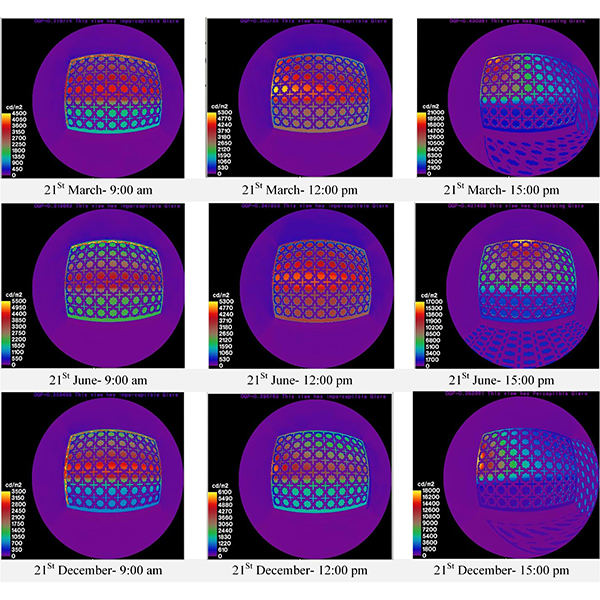
RESEARCH ARTICLE
The Role of Orosi’s Islamic Geometric Patterns in the
The form of the building facade significantly affects the amount of useful daylight admitted in the interior space. Striking a balance between the visual comforts of occupants and taking advantage of daylight is always a challenge and, therefore, investigating complex, geometric forms of Orosi patterns can be an effective way of improving visual comfort alongside the aesthetic aspects.
Journal of Daylighting 7 (2020) 201-221
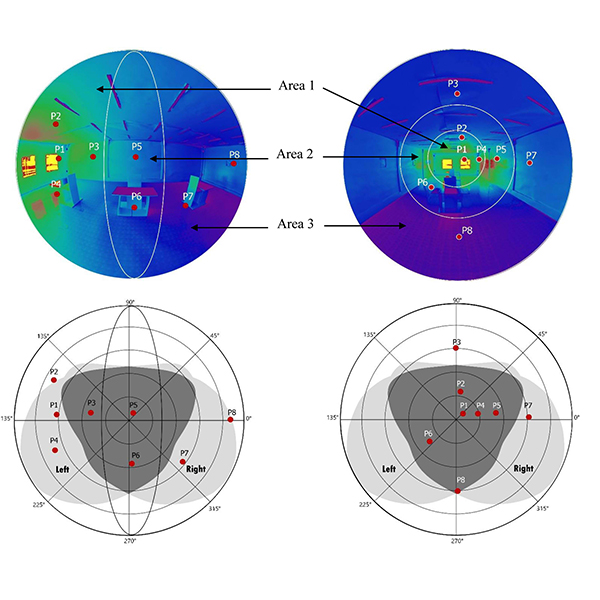
RESEARCH ARTICLE
A Combined Method for an Exhaustive Investigation of the Anidolic
Lighting quality in office environments is a broad concept that must be taken into account in the design stage to deliver comfortable spaces to reduce workers' stress.
Journal of Daylighting 8 (2021) 149-164
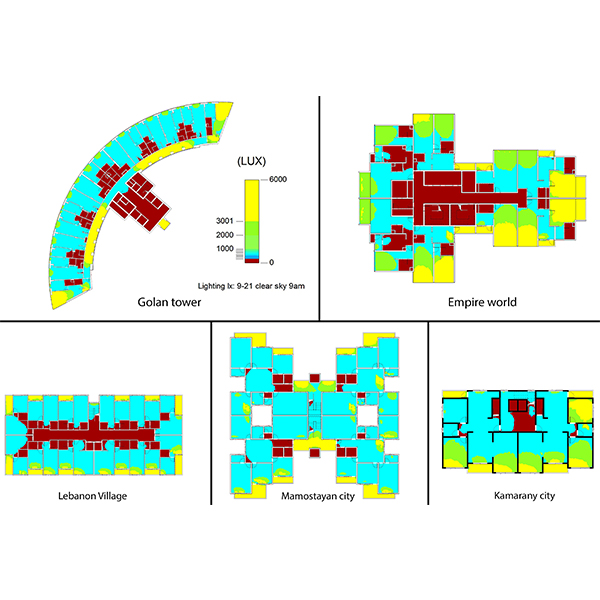
RESEARCH ARTICLE
Impact of Building Typology on Daylight Optimization Using Building Information
Daylight represents one of the crucial factors that affect directly on the building performance and its occupants. This study assesses the daylight performance in the multi-storey residential buildings (apartments) in Erbil city.
Journal of Daylighting 6 (2019) 187-201

RESEARCH ARTICLE
An Improvement to Calculation of Lighting Energy Requirement in the
Daylighting has a recognized potential for electric energy savings when is used as a complement for artificial lighting. This study reviews the comprehensive calculation method for lighting energy requirement in non-residential buildings introduced by the European Standard EN 15193: 2007 and investigates its feasibility in China.
Journal of Daylighting 1 (2014) 16-28
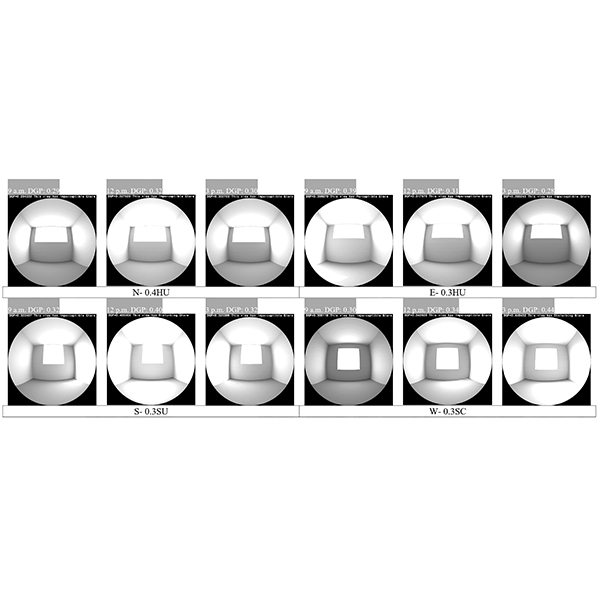
RESEARCH ARTICLE
Optimum Characteristics of Windows in an Office Building in Isfahan
Nowadays, the use of renewable energies has increased due to the energy crisis and subsequent environmental issues. The window design significantly affects energy consumption and natural light absorption regarding preventing visual discomfort and improving indoor quality with effective external features.
Journal of Daylighting 8 (2021) 222-238

RESEARCH ARTICLE
Quantitative Investigation Through Climate-based Daylight Metrics of Visual Comfort
There are several alternatives to passive strategies in the early stages of the design process including orientation, window to wall ratio, shading device, material and colour that affect occupants’ visual comfort. .
Journal of Daylighting 5 (2018) 21-33
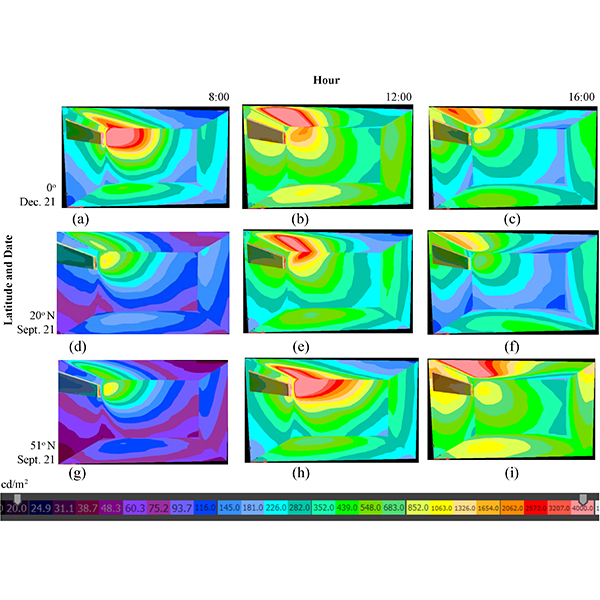
RESEARCH ARTICLE
Application of Micro-structured Sunlighting Systems in Different Climatic Zones
Two-sided micro-structures on windowpanes have been developed for redirecting sunlight into the depth of rooms in order to improve daylighting. In a joint research project comprehensive sunlighting-systems for windows are developed, integrating micro-structures in triple-glass units.
Journal of Daylighting 6 (2019) 52-59
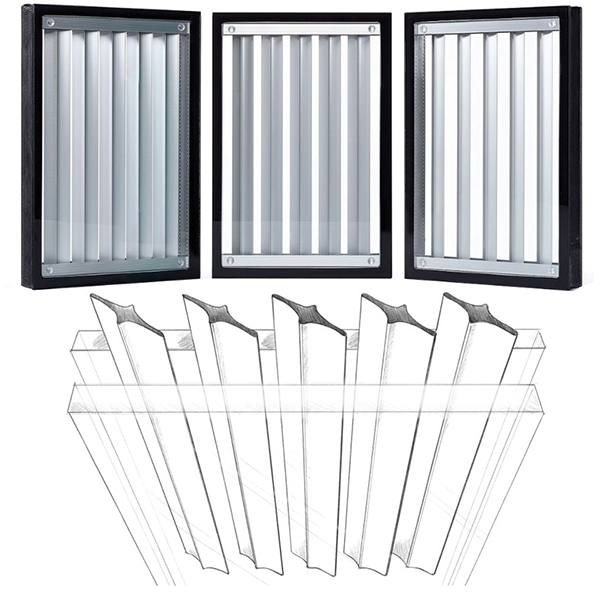
REVIEW ARTICLE
Daylight in Buildings and Visual Comfort Evaluation: the Advantages and
Exposure to daylight significantly affects the psychological well-being of occupants by diminishing headaches, eye tensions, or stress. Daylight penetration is a matter of collaboration between building façade and perimeter zones that can be controlled through façade design features. .
Journal of Daylighting 8 (2021) 181-203
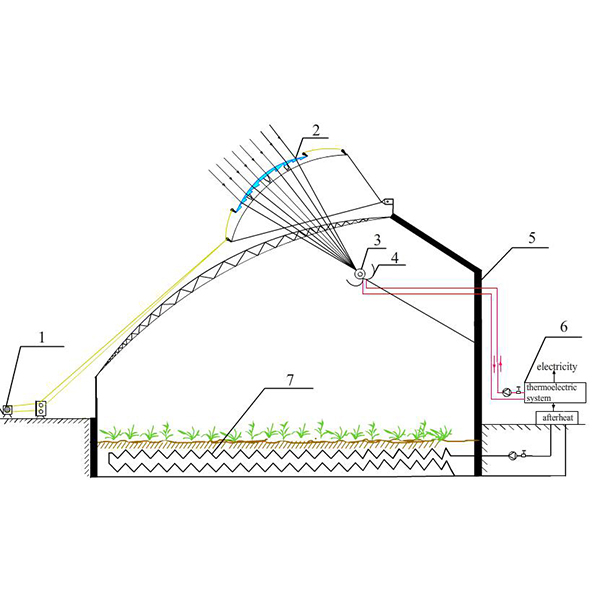
RESEARCH ARTICLE
Optical Analysis of A Sliding-Type Cylindrical Fresnel Lens Concentrating
Agricultural greenhouses are commonly built around cities to supply residents with agricultural products or green plants. With an increasing demand for plants’ growing environment, the temperature and illumination inside the greenhouses are counted especially during cold winter. .
Journal of Daylighting 8 (2021) 110-119
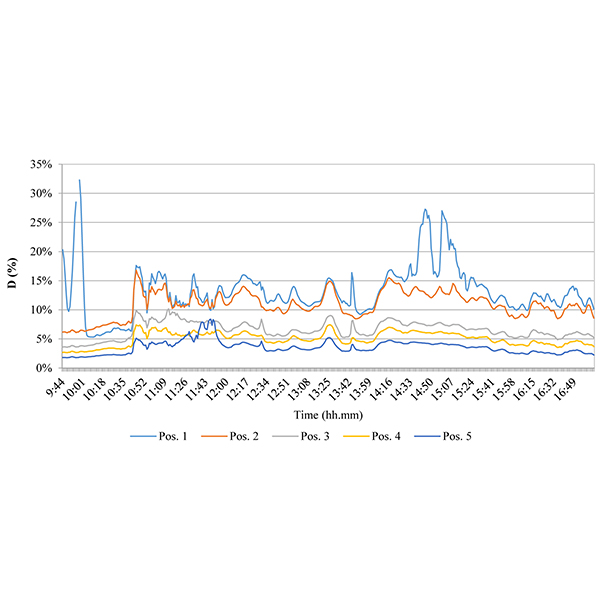
RESEARCH ARTICLE
Experimental Analysis of the Performance of Light Shelves in Different
Daylight plays a significant role in achieving energy saving and comfort in buildings. It is in accordance with the human circadian rhythms and allows the best visual conditions in work environments and residential buildings.
Journal of Daylighting 7 (2020) 37-56

RESEARCH ARTICLE
Design and optical evaluation of a novel asymmetric lens-walled
Solar concentrating system is an effective way of combing solar energy with the building to satisfy the needs besides of electricity and hot water, also includes building heating, refrigeration, dehumidification, which require higher quality heat source.
Journal of Daylighting 4 (2017) 26-37
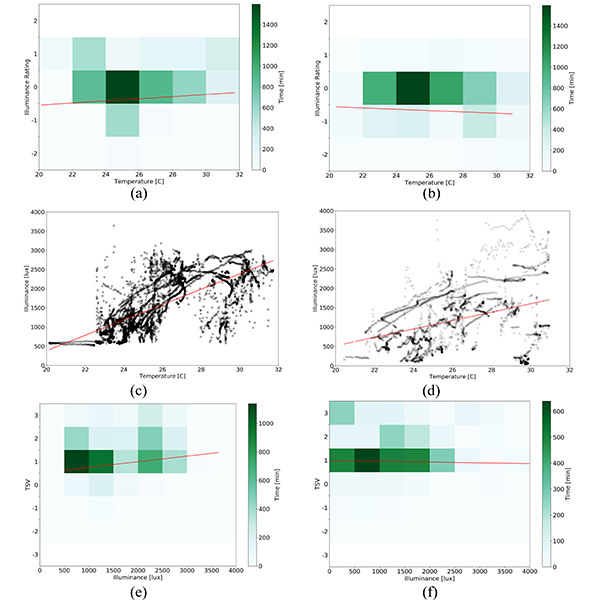
RESEARCH ARTICLE
Automatic vs Manual Control Strategy for Window Blinds and Ceiling
A case study to evaluate the occupants' satisfaction in relation to two different control strategies (fully automatic and manual) for blind and ceiling lights use in cell offices was carried on in Trondheim, Norway.
Journal of Daylighting 6 (2019) 112-123
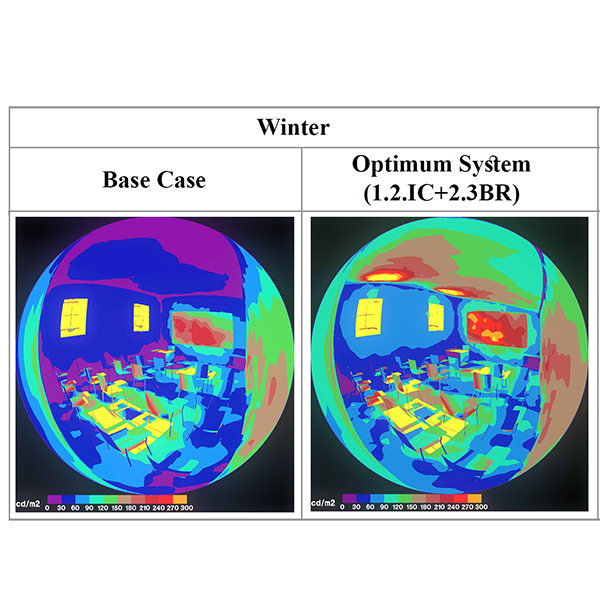
RESEARCH ARTICLE
Improving Daylight Availability in Heritage Buildings: A Case Study of
Refurbished heritage buildings usually lack in meeting the required standards defined for the new function especially when reused as educational buildings.
Journal of Daylighting 8 (2021) 120-133
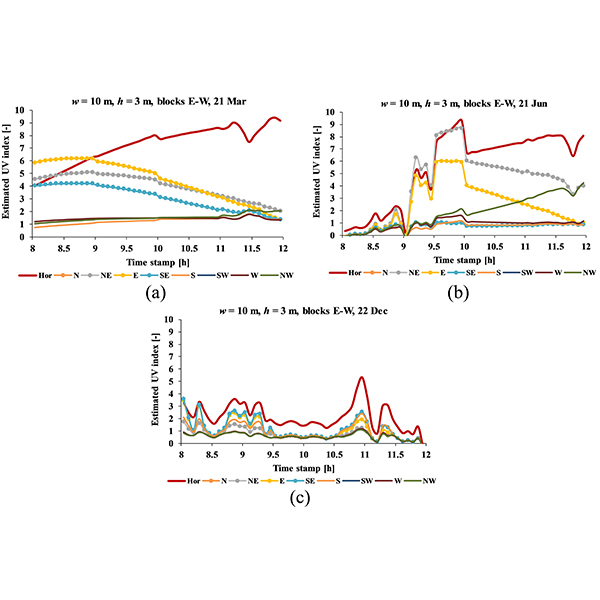
RESEARCH ARTICLE
The Impact of Courtyard and Street Canyon Surroundings on Global
Exposing oneself to outdoor daylight in the morning can be healthy and harmful at the same time, due to the risk of ultraviolet exposure. The presence of surrounding buildings in the urban context may also influence the risk.
Journal of Daylighting 7 (2020) 167-185

RESEARCH ARTICLE
Lighting Energy Saving with Light Pipe in Farm Animal Production
The Swedish animal production sector has potential for saving electric lighting of €4-9 million per year using efficient daylight utilisation. To demonstrate this, two light pipe systems, Velux® (house 1) and Solatube® (house 2), are installed in two identical pig houses to determine if the required light intensity, daylight autonomy (DA), and reduced electricity use for illumination can be achieved. In.
Journal of Daylighting 2 (2015) 21-31

RESEARCH ARTICLE
Impact of Furniture Layout on Indoor Daylighting Performance in Existing
Currently, home-based computing workspaces have developed substantially all over the world, especially in Malaysia. This growing trend attracts computer workers to run a business from their residential units.
Journal of Daylighting 5 (2018) 1-13
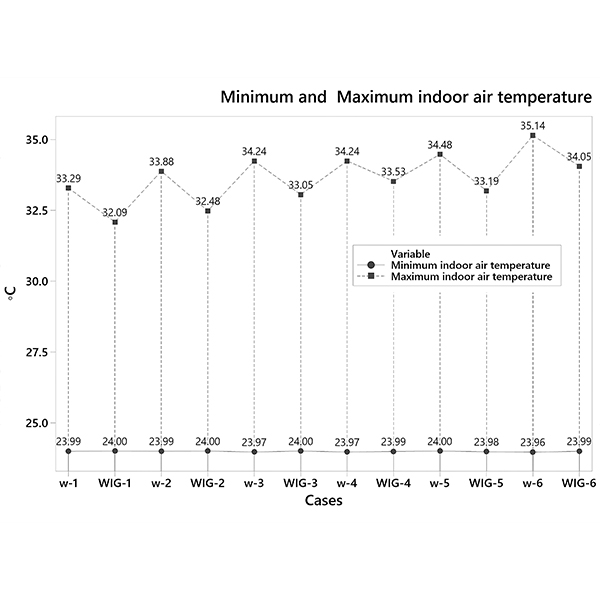
RESEARCH ARTICLE
Assessment of the Thermal Performance of Vertical Green Walls Using
Construction of multifunctional building envelopes using vertical greenery walls (VGW) has emerged as a sustainable green technology to improving cooling efficiency.
Journal of Daylighting 8 (2021) 294-312

RESEARCH ARTICLE
Application of Different Circadian Lighting Metrics in a Health Residence
During the last three decades, various scientific researchers analysed the connection between natural elements and human life, both as far as well-being and productivity.
Journal of Daylighting 7 (2020) 13-24
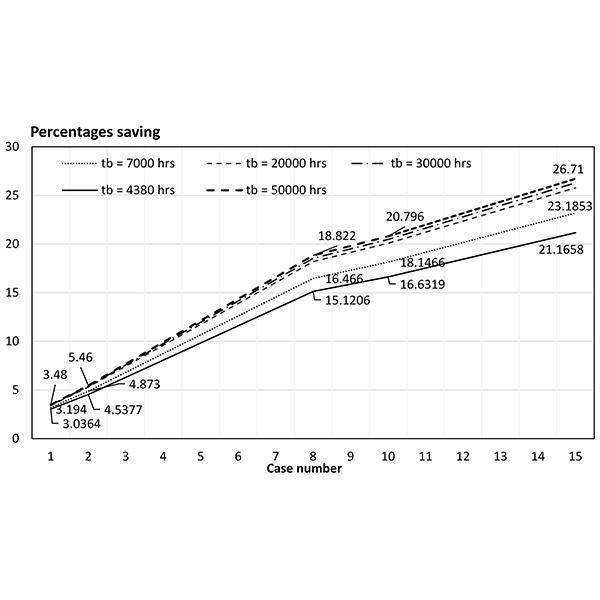
RESEARCH ARTICLE
A New Trend for Indoor Lighting Design Based on A
Most power system planners are interested in the savings of electrical power consumption. Various references demonstrate that the highest consumed power is by the lighting systems standing around 19% of worldwide energy consumption.
Journal of Daylighting 7 (2020) 137-153
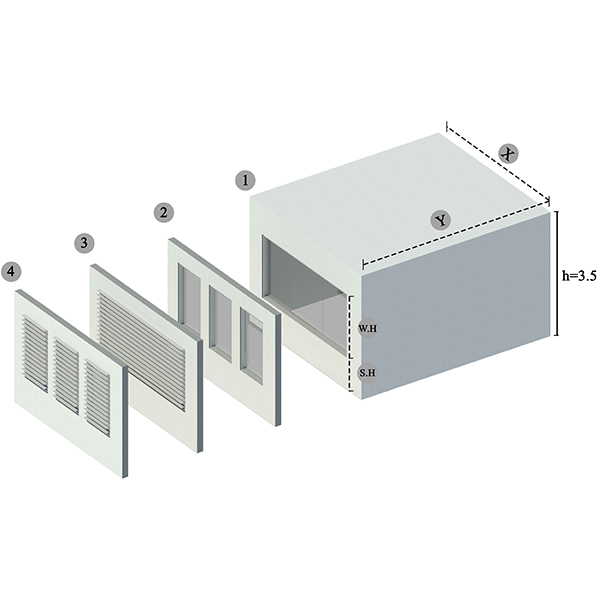
RESEARCH ARTICLE
Development of a Machine-Learning Framework for Overall Daylight and
Application of machine learning methods as an alternative for building simulation software has been progressive in recent years. This research is mainly focused on the assessment of machine learning algorithms in prediction of daylight and visual comfort metrics in the early design stages and providing a framework for the required analyses.
Journal of Daylighting 8 (2021) 270-283
 HOME
HOME